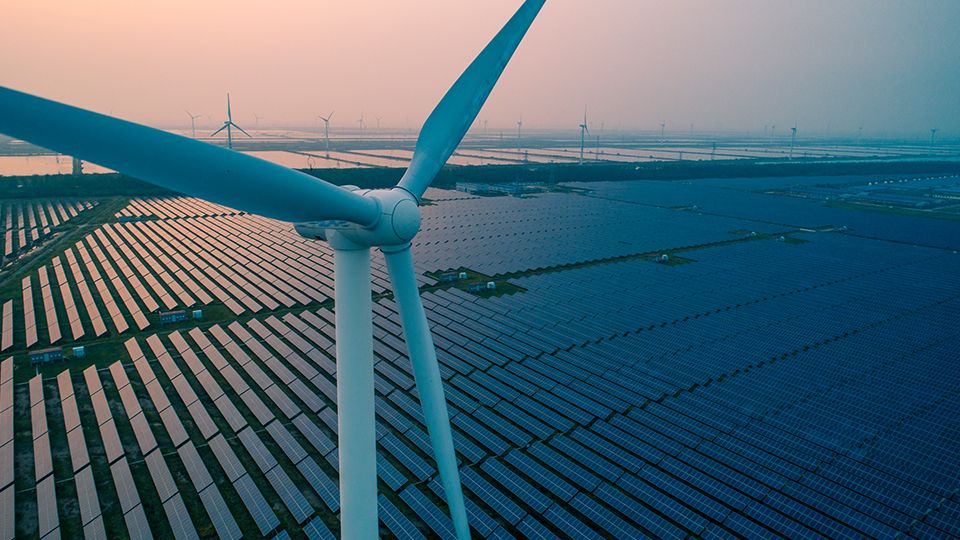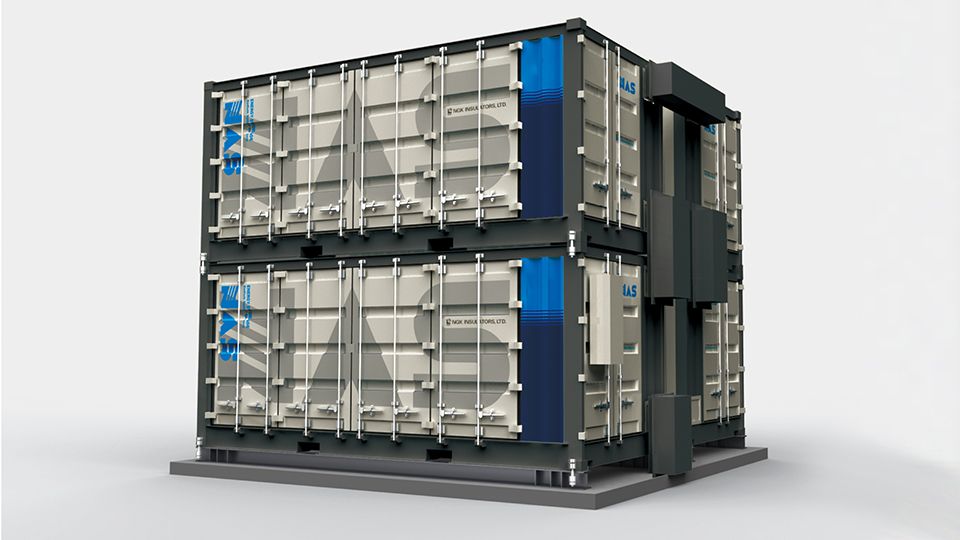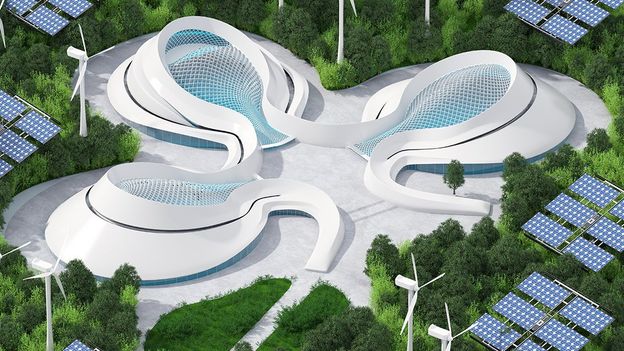Innovators of Tomorrow
Why are batteries crucial for renewable energy?
The world aims to achieve carbon neutrality by 2050. Here’s why batteries have a crucial role to play in renewable energy.
Last year saw records broken in measurements of greenhouse gas concentrations, sea level rise, ocean heat and ocean acidification. These markers of climate change highlighted the need to achieve carbon neutrality and constrain global warming to avoid the worst consequences of climate change. Since energy – including industry, heating and transport – accounts for 73% of all emissions*, there’s an urgent need to expand the use of renewables such as solar and wind. One major problem, however, is reliability. While sunlight and wind don’t always reach solar panels and wind turbines, our need for electricity is constant. That’s where storage batteries can make a big difference.
Hydrogen from the wind
Renewables are set for huge growth. According to the International Energy Agency, by 2026 renewable electricity capacity is expected to grow more than 60% from 2020 levels to over 4,800 gigawatts, which was equivalent to the total fossil fuel and nuclear power capacity in 2021. Renewables will make up nearly 9% of the increase in global power capacity through 2026 and solar will account for more than half.

A major challenge in this new capacity will be intermittency. How can energy supply from renewables be more reliable? Storage batteries can preserve the electricity generated when intermittent power sources are available. This power can be later used in blackouts or, as part of load balancing, in times of peak demand. Storage batteries can also provide renewable power in a stable form, eliminating any disturbances that intermittency might cause.
Storage batteries for large-scale power generation are a relatively new concept but much like pumped-storage hydroelectricity, which dates to the early 20th century. Since storage batteries have evolved to an industrial scale with megawatt capacity, they’re being installed around the world to make power grids more sustainable and resilient.
One example is Sangmyung Wind Farm on Jeju Island, South Korea. It uses wind turbines to generate renewable energy for the creation of green hydrogen, a zero-emissions fuel for vehicles and other applications. South Korea is investing heavily in hydrogen, with its largest conglomerates putting a combined $38 billion into the country’s drive towards a “hydrogen economy”.
To produce hydrogen, the 21-megawatt power-to-gas (P2G) Sangmyung plant, implemented by G-Philos, a Korean P2G operator, and Korea Midland Power, relies on intermittent wind. To overcome that, it uses sodium-sulphur, or NAS**, batteries to provide stable supplies of electricity. The batteries provide power to the electrolyser, a system that breaks down water into hydrogen and oxygen through electrolysis.

“The battery plays an important role in preventing the system from unexpected stops, abnormalities, degradation of electrolyser stacks and other damage to the energy balance of the plant, which can occur when renewable energy is directly fed into the electrolyser,” says Han Yu, head of Asia sales, BASF Stationary Energy Storage, which supplied the NAS batteries.
Yu says the NAS system was chosen because it’s able to store enough energy to operate electrolysers even when wind turbines don’t generate for a long time. Another important feature is its safety. Because it’s close to hydrogen production and storage, preventing fires is critical.
“G-Philos concluded that NAS battery’s safe, large-capacity energy storage solution is well suited for their green hydrogen project,” says Yu. After successfully producing green hydrogen during a test period, the Sangmyung Wind Farm will be expanded for green mobility applications such as fuel cell electric vehicles (FCEVs) and fuel cell drones.
Global growth in storage batteries
The NAS battery system is made by NGK Insulators. The battery consists of sodium and sulphur electrodes separated by a ceramic electrolyte. It can deliver surplus energy over six hours or more of high-power output. In one installation in Japan, 252 NAS battery containers were set up, proving 50 megawatts of output and 300 megawatt-hours of storage capacity. That’s enough to power about 30,000 households for a day.
“The NAS batteries are very well suited for applications such as shifting large amounts of surplus electricity generated by solar power during the daytime to nighttime, and such applications are expected to increase in the future,” says an NGK Insulators spokesperson.
So far, more than 250 NAS projects have been installed around the world, with a total capacity of 700 MW/4.9 GWh.
Waichi Sekiguchi, president of MM Research Institute, sees the NAS batteries as an important technology in countries like Japan, which is trying to boost renewable energy amid sluggish restarts of nuclear power plants after the 2011 Fukushima nuclear meltdowns.
“While the use of the NAS batteries for storage by utilities such as Kyushu Electric Power is expanding, these batteries are expected to play an important role in the demand for locally produced and consumed power that does not rely on conventional grids,” says Sekiguchi. “In the future, we will need regional power supply networks that do not rely on electric power companies, and in that sense, we will see new ways of using the NAS batteries.”
Large-scale storage batteries are crucial for renewable energy because they can improve its availability and reliability, making it a more feasible option for societies and energy suppliers. It’s one way that battery technology is part of a smarter, greener future world.
* Hannah Ritchie, Max Roser and Pablo Rosado (2020) - "CO₂ and Greenhouse Gas Emissions". Published online at OurWorldInData.org. Retrieved from: 'https://ourworldindata.org/co2-and-other-greenhouse-gas-emissions' [Online Resource]
** NAS and NAS logo are trademarks of NGK Insulators, Ltd., registered in the United States and other countries.







